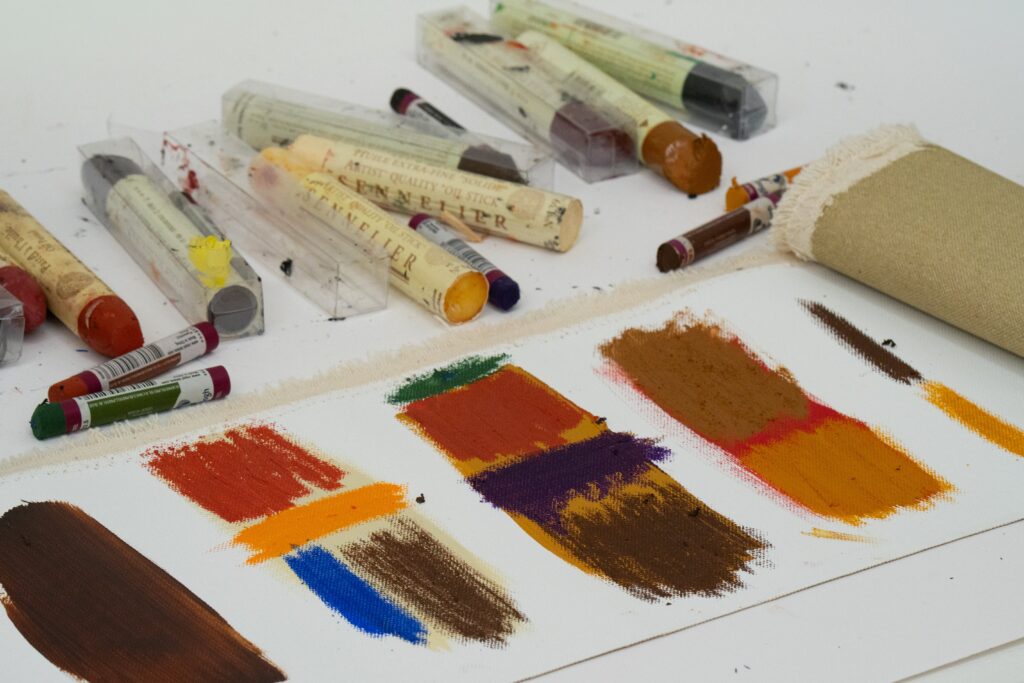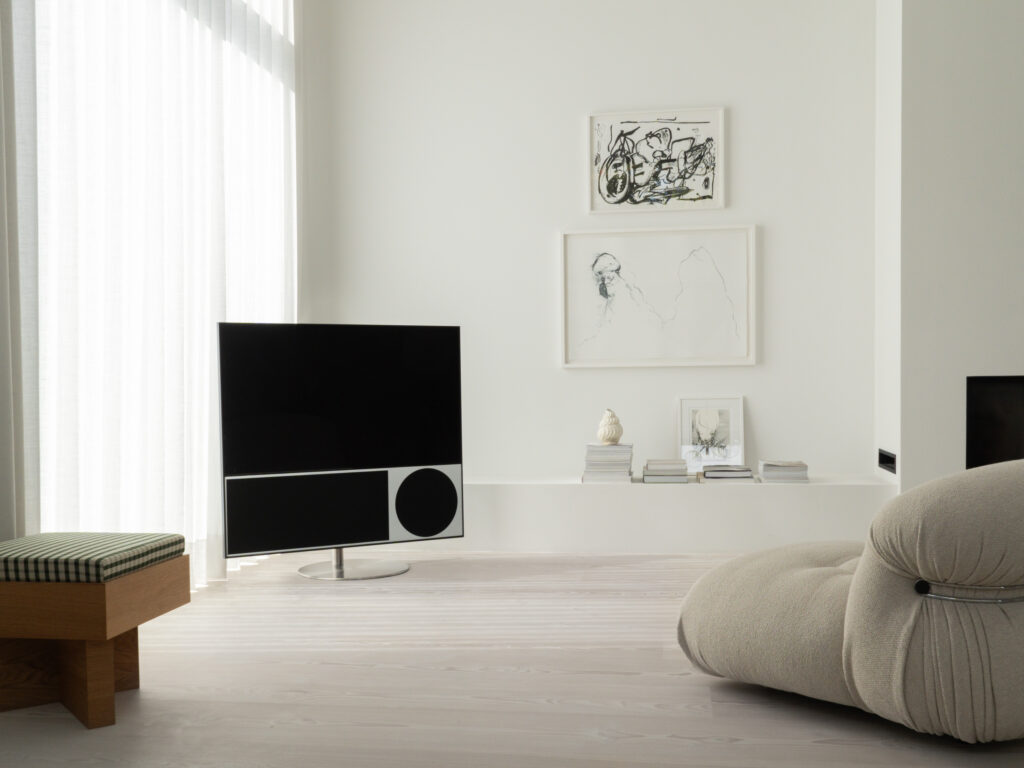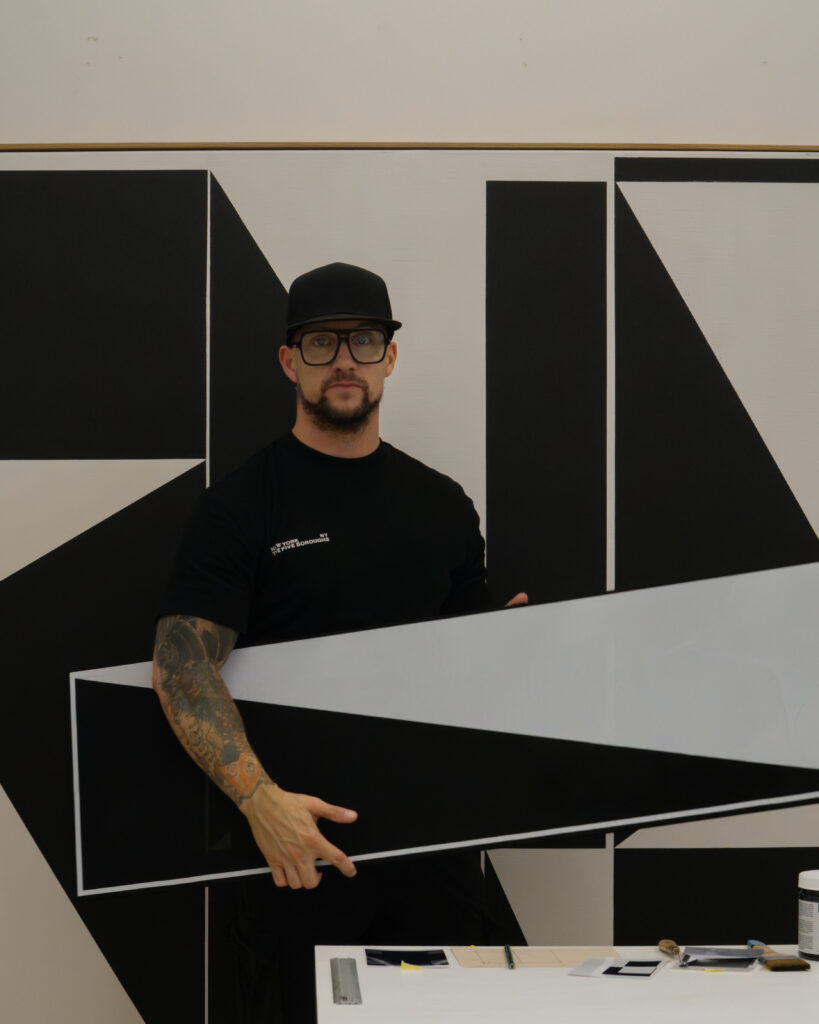For his first solo exhibition in Hamburg, Carsten Beck reflects on his artistic process marked by a shift from algorithmic imagery to painting and textile. In this exchange, he talks about the collaboration with a leading technology company and he reflects on the interpretation of his work through the perspective of urban theorist Camillo Sitte.
Your exhibition is titled 01_From Surface to Substance. What does this phrase capture about your artistic process, and how does it describe the movement from digital surface to physical presence in your work?
01_From Surface to Substance is both a precise expression of the movement my entire practice revolves around. I see it as a journey from the immaterial to the tactile, from pixels to pigment, from code to body. The title speaks to the fact that much of our visual culture today unfolds on flat surfaces. Think screens, interfaces, feeds. Images are constantly produced, distributed, and consumed in a kind of superficial flow. I wanted to insist on something else: to give images physical presence again, to make them “breathe” in space, among people, with materiality and gravity.
Many of my works begin in a digital realm, maybe as an AI-generated image, a photograph of an architectural detail, or an abstract algorithmic composition. But that’s only the surface. The real work begins when I start to process the image, disturb it, pull it out of the screen and into something that has volume, substance and fragility. It’s only when my hands have worked with it, through paint, textile, paper, thread, that the digital image transforms into something real, something embodied.

Your process often begins with photography, architecture and AI before evolving into painting and textile. How do you navigate that shift from algorithmic image to handmade object, from data to touch?
It’s a kind of translation, but not one that follows fixed rules. Rather, it’s an intuitive, sensory journey, where I allow the data to speak its language, and then I “interrupt” it with the body, with presence, with time. The digital visual world is so optimized, so perfect in its structure, but for me, art is about breaking that open,allowing noise, error, and the handmade gesture to enter.
I often use My Camera as a starting point, a sort of dialogue with a mechanical view of the world in frames. Algorithms generate patterns, structures, architectural spaces. I’m however not interested in showing the “finished” digital result. What interests me is the moment when I confront the image, when I paint it in large strokes, sew it into fabric, tear it apart and stitch it back together. It’s a way of reestablishing contact, an act of making the image vulnerable, porous, alive.
It’s also a way of reclaiming control over what is otherwise smooth and calculated. Through insisting on the handmade, the texture of textiles, the resistance of the brush, the rhythm of thread, I try to make the invisible visible: the human longing for closeness, for something we can feel.
A central piece in this exhibition comes from your collaboration with a leading technology company on an innovative display object. How did this collaboration start, and what drew you to merge digital art with sound, material and design in this way?
The collaboration actually began through a shared interest in the space between aesthetics and technology. I was contacted by a tech company working on new kinds of display technologies- They had a clear desire to think beyond the classic screen. That immediately fascinated me, because it resonated deeply with my own practice: making the digital physical, sensory and present.
The central piece in the exhibition is a kind of hybrid. A “living” object where the image doesn’t just appear, but transforms through sound, light, and the way the material is folded. It was important for me that it didn’t become a “gadget” or a product, but a poetic object, something that opens up new spaces for ambiguity and reflection. Together, we found a balance between their technical precision and my more organic approach to image and form.
Sound became a natural extension. It adds a sense of time, a pulse, a rhythm, that mirrors the slowness I seek in my craft. The combination of textile, digital projection, and sound creates a piece that almost breathes. And that, in a way, is what I’m longing for: that technology doesn’t remove us from the living, but brings us closer to it.

From an art historical perspective your work resonates with Camillo Sittte’s ideas about emotional urban space. How do you relate to his vision of cities as human and irregular and how do you reinterpret that through today’s digital tools?
Camillo Sitte had a deeply poetic understanding of the city. Not as something functional and streamlined, but as a space for experience, for the senses, for human encounter. I’ve always been drawn to that idea: that the irregularities of the city, its corners, asymmetries and contradictions, are what make it human. That way of thinking feels radical today, in a world increasingly shaped by data, efficiency and predictability.
My work begins with the camera. Photography is how I compose. Not to document, but to extract structure, rhythm and form from the world around me. I’m drawn to architecture, surfaces and the way light creates geometry in space.
These photographs are not endpoints, but starting points. They become source material for works in paint, textile and mixed media. Even when the image disappears, the logic of photography remains, in the framing, in the angles, in the quiet tension of composition.
It’s a movement from image to object, from surface to substance.

Your practice constantly balances technology and craftsmanship. What do you think happens when these two forces meet and how does this tension define your view of art in the digital age?
When technology and craftsmanship meet, friction arises. It is in that friction that I find my energy as an artist. I don’t see them as opposites, but as forces that can amplify each other, if you allow them to connect. Technology brings speed, complexity, scale. Craft brings slowness, materiality, presence. When these forces meet in my work, a tension emerges that gives the image depth, both physically and conceptually.
I believe we’re past the point of simply “celebrating” the digital. We also need to pause, reflect and insist on the analog as part of the answer, not as nostalgia, but as necessity. For me, art in the digital age is about creating connection. One between machine and body, between screen and fabric, between algorithm and intuition.
It’s not either-or, but both-and. It’s precisely in the imperfect meeting, between coded precision and handmade vulnerability, that something real can emerge. Art that isn’t just seen, but felt.